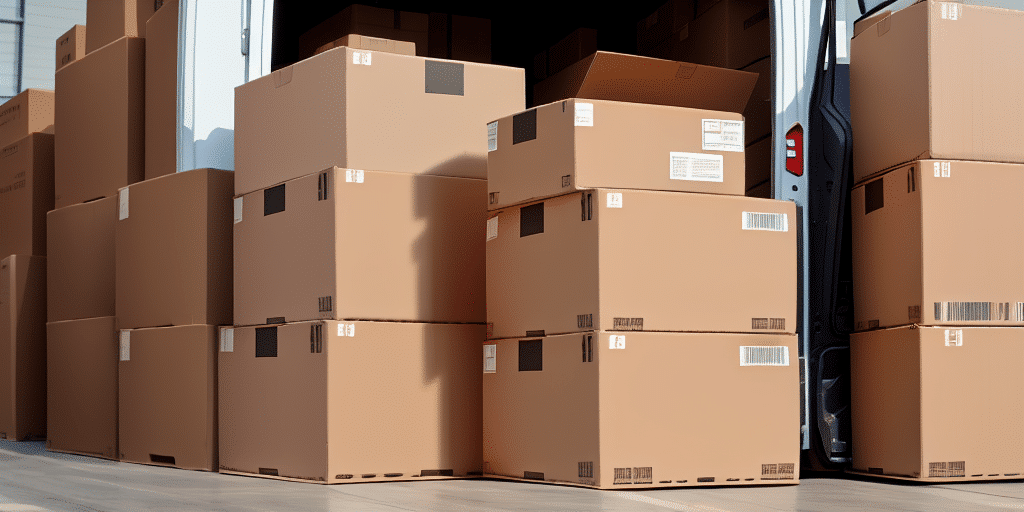Understanding 3PL and In-house Logistics Operations
In the logistics industry, companies can either outsource their logistics operations to third-party logistics (3PL) providers or manage them in-house. Both options offer distinct advantages and disadvantages that businesses must carefully evaluate. This article explores the pros and cons of transitioning from 3PL to in-house operations and provides guidance on determining the best approach for your business.
Advantages of Using 3PL Services
Cost Savings
One of the primary benefits of utilizing 3PL services is the potential for significant cost savings. By partnering with a 3PL provider, businesses can reduce expenses related to transportation, warehousing, and inventory management. According to a Investopedia article, outsourcing logistics can help companies achieve economies of scale and lower operational costs.
Expertise and Technology
3PL providers bring specialized knowledge and advanced technology to optimize logistics operations. They often utilize state-of-the-art transportation management systems (TMS) and warehouse management systems (WMS) to enhance efficiency, resulting in faster delivery times and improved customer satisfaction.
Flexibility and Scalability
As businesses grow, their logistics needs may evolve. 3PL providers offer the flexibility to scale operations up or down based on demand, providing customized solutions that align with the specific requirements of the business. This adaptability allows companies to focus on their core competencies while leaving logistics management to the experts.
Disadvantages of Using 3PL Services
Lack of Control
Outsourcing logistics operations means relinquishing some control over the supply chain. Businesses may have limited visibility into their logistics processes, making it challenging to coordinate effectively with the 3PL provider. This lack of control can impact brand standards and customer experience.
Potential for Increased Costs
While outsourcing can lead to cost savings, hidden fees and charges may result in higher overall expenses. Additionally, 3PL providers might not always prioritize the client's needs, leading to delays and inefficiencies that can further escalate costs. It is crucial for businesses to thoroughly evaluate the financial implications of using 3PL services.
Benefits and Challenges of In-house Operations
Greater Control and Customization
Managing logistics operations in-house provides businesses with greater control over their supply chain. Companies can tailor their logistics processes to meet specific needs, maintain brand standards, and ensure higher levels of service quality. Enhanced visibility into operations allows for timely identification and resolution of issues.
Building a Strong Company Culture
In-house logistics operations foster a stronger connection between employees and the company’s mission. This can lead to increased job satisfaction, higher employee retention rates, and a more cohesive organizational culture.
Cost Savings in the Long Run
While initial investments in technology, infrastructure, and personnel may be high, managing logistics internally can lead to long-term cost savings by eliminating hidden fees associated with outsourcing. Businesses have better control over their budget and can optimize expenditures based on their specific needs.
Significant Investments Required
In-house operations demand substantial investments in technology, infrastructure, and skilled personnel. Businesses must ensure they have the necessary resources to manage logistics efficiently. This includes investing in advanced software solutions and maintaining facilities such as warehouses and transportation fleets.
Constant Updates and Upgrades
To remain competitive, businesses must continuously update and upgrade their logistics technology and infrastructure. Keeping pace with technological advancements can be both costly and time-consuming, particularly for smaller companies with limited resources.
Potential Distraction from Core Competencies
Focusing on logistics operations can divert attention from a company’s primary goals and objectives. By managing logistics in-house, businesses might lose sight of their core competencies, which can affect overall efficiency and profitability.
Cost Comparison: 3PL vs In-house Operations
When deciding between 3PL and in-house logistics, conducting a comprehensive cost comparison is essential. While outsourcing logistics can reduce certain operational costs, managing logistics internally may require significant upfront investments in technology, infrastructure, and personnel.
Outsourcing to a 3PL provider can offer access to specialized expertise and advanced technologies that might be prohibitively expensive for individual businesses to implement on their own. Conversely, in-house operations provide greater control and potential long-term savings but come with higher initial costs and ongoing expenses.
Businesses should evaluate both short-term and long-term financial impacts, considering factors such as scalability, efficiency, and the potential for hidden costs associated with each option.
Making the Decision: Is Switching to In-house Operations Right for Your Business?
Determining whether to transition from 3PL to in-house logistics requires a thorough evaluation of your company's unique needs, resources, and strategic goals. Consider the following factors when making your decision:
- Control: Assess the level of control you require over your logistics operations.
- Cost: Compare the cost implications of outsourcing versus managing logistics internally.
- Expertise: Evaluate whether your team has the necessary expertise to handle logistics operations effectively.
- Resources: Ensure you have the infrastructure and technology needed to support in-house logistics.
Conducting a cost-benefit analysis can provide valuable insights and help you make an informed decision that aligns with your business objectives.
Best Practices for Transitioning from 3PL to In-house Operations
Invest in the Right Technology and Infrastructure
Successful transition requires robust technology and infrastructure. Invest in advanced logistics software, such as transportation management systems (TMS) and warehouse management systems (WMS), to streamline operations and enhance efficiency.
Hire and Train the Right Personnel
Building a competent logistics team is critical for in-house operations. Hire individuals with expertise in inventory management, transportation planning, and supply chain optimization. Provide ongoing training to ensure your team stays current with industry best practices.
Partner with Supporting Third-party Providers
While managing logistics in-house, partnering with third-party technology providers or consultants can offer additional support and guidance during the transition. These partnerships can help mitigate risks and ensure a smoother shift.
Maintain Clear Communication with Customers
Transparent communication is essential to minimize disruptions during the transition. Inform customers about any changes in logistics operations and have contingency plans in place to address potential service disruptions promptly.
Future Trends in the Logistics Industry
The logistics industry is continually evolving, influenced by advancements in technology and changing market dynamics. Key trends that will impact both 3PL and in-house operations include:
- Automation and Robotics: The use of drones, robots, and automated systems is increasing efficiency and reducing labor costs in logistics operations.
- Artificial Intelligence (AI) and Machine Learning: AI-driven analytics are enhancing supply chain visibility and decision-making processes.
- Sustainability: There is a growing emphasis on sustainable logistics practices to reduce environmental impact.
- Blockchain Technology: Blockchain is being used to improve transparency and security in supply chain management.
Staying informed about these trends and adapting your logistics strategy accordingly will be crucial for maintaining competitiveness and operational efficiency.
Conclusion: Deciding Between 3PL and In-house Logistics Operations
Transitioning from 3PL to in-house logistics operations is a significant decision that requires careful consideration of your business's specific needs, resources, and long-term objectives. Both approaches offer unique benefits and challenges, and the right choice depends on various factors, including cost, control, expertise, and scalability.
By conducting a thorough cost-benefit analysis, investing in the necessary technology and personnel, and adhering to best practices during the transition, businesses can successfully manage their logistics operations in a way that supports their strategic goals and enhances overall efficiency.






















